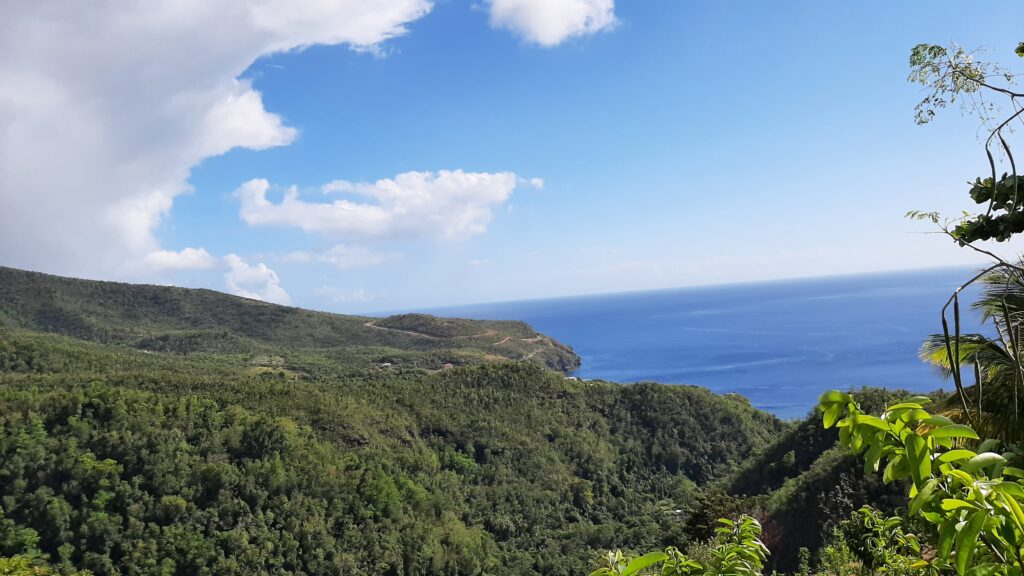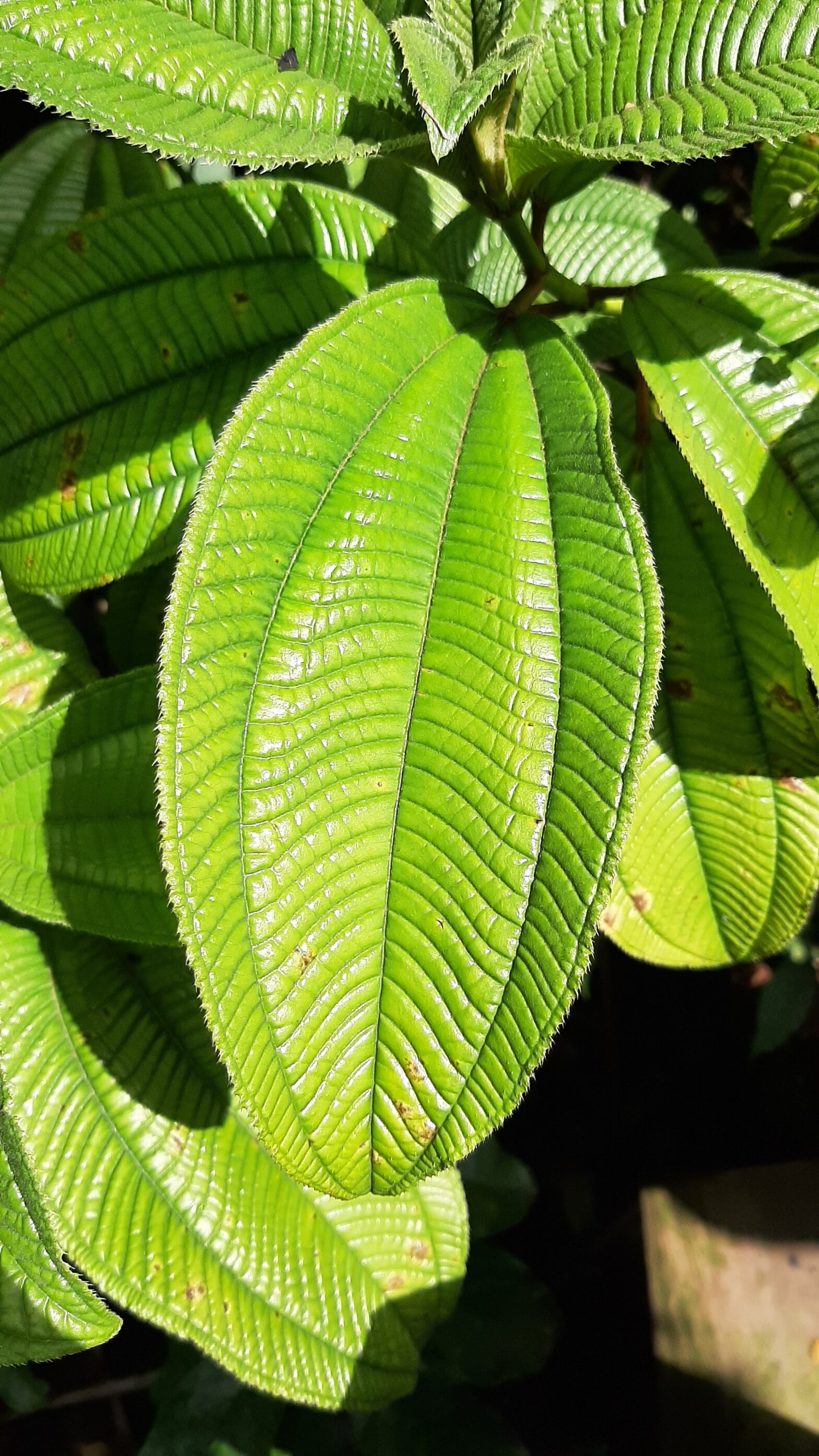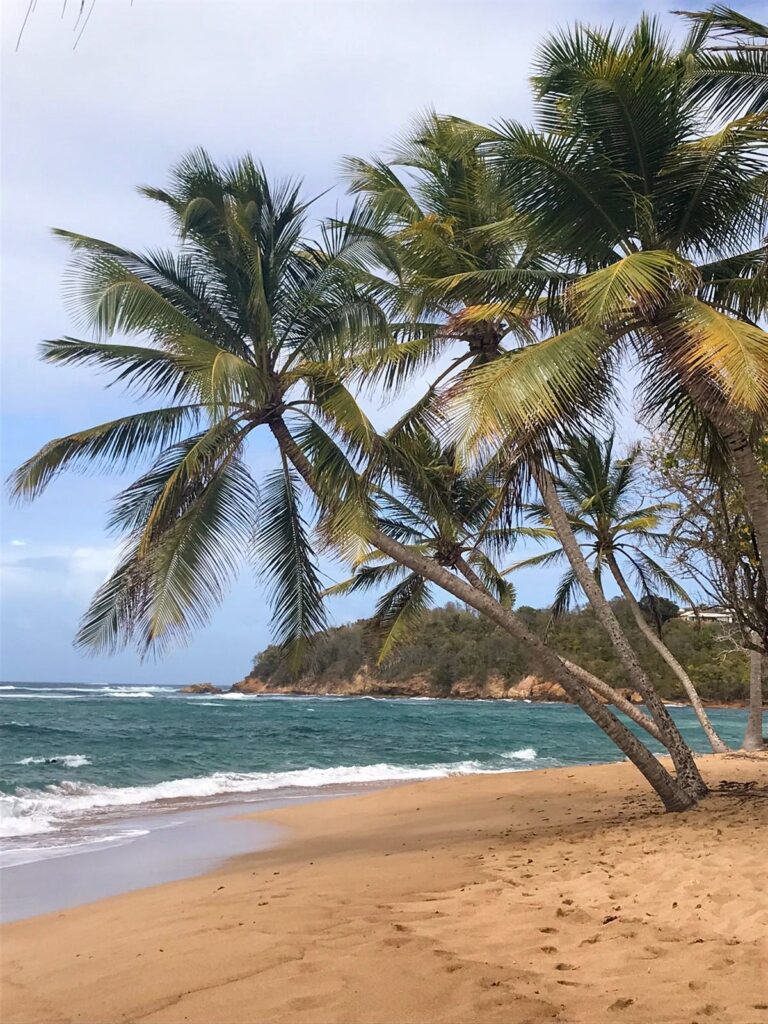It was of course wonderful to have family visits on Martinique! Enough to catch up and we also sailed with the five of us and stayed at anchor overnight, so that the visitor can experience a bit of what it is like on board. Awesome!
Martinique is, as previously described, super French and there are also many French tourists on the island and also (we think) originally French who have built up a living here. It is a relief to visit the Carrefour: not only cabbage, onions, potatoes and sometimes some green beans, but also “normal” mushrooms, avocado, leeks. And all kinds of French cheeses and of course Nutella! We were looking forward to that.
Clearing customs here is a breeze. Just enter your details on the computer in the marina of le Marin, where you came from, how long you think you will stay and where you are going and that’s it! Ditto when clearing out in St. Pierre. By the way, there was also a free antigen test done at the pharmacy, which is necessary for access to Dominica, the island north of Martinique.
On the way to the airport to welcome our visitors, we had a huge detour with the bus, because the bus we were supposed to have does not show up (oops, moment of stress), but the drivers of 2 other buses take us via an alternative route to arrive at the airport on time. We have already seen a large part of the south of the island. Many banana plantations, a hilly landscape with cultivation and also grazing cows. We hadn’t seen them in a while! And the roads are fine with French signs and road signs. And again glass bins, it is still difficult to just throw glass into the garbage can.
Martinique has many bays with beaches with palm trees. The east coast has a wilder sea, but also a lot of sargasso weed, not really nice for swimming there. There are often containers ready to collect the weed.
We visit a rum plantation and later in the north we bump into another one near St. Pierre. In both cases you can see from the house and the castle that they did well here. And still do, because the last one at St. Pierre is still fully operational. This is beautifully situated on the slope of the Mont Pelée, the volcano that destroyed the entire village in 1902, resulting in many deaths.
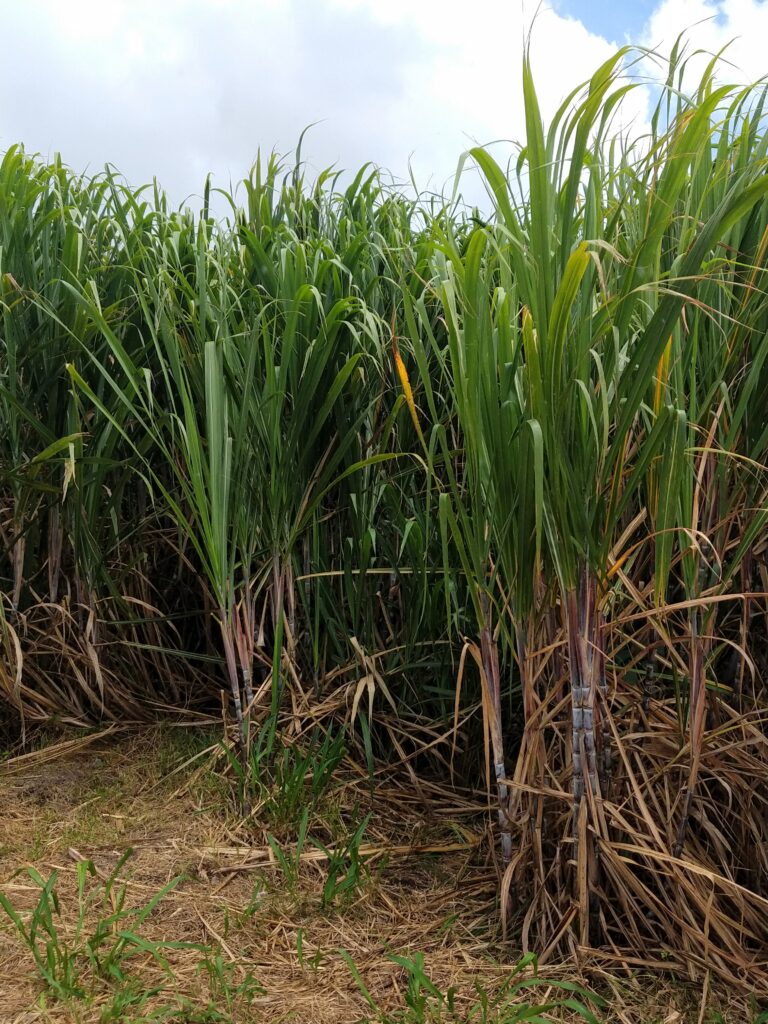
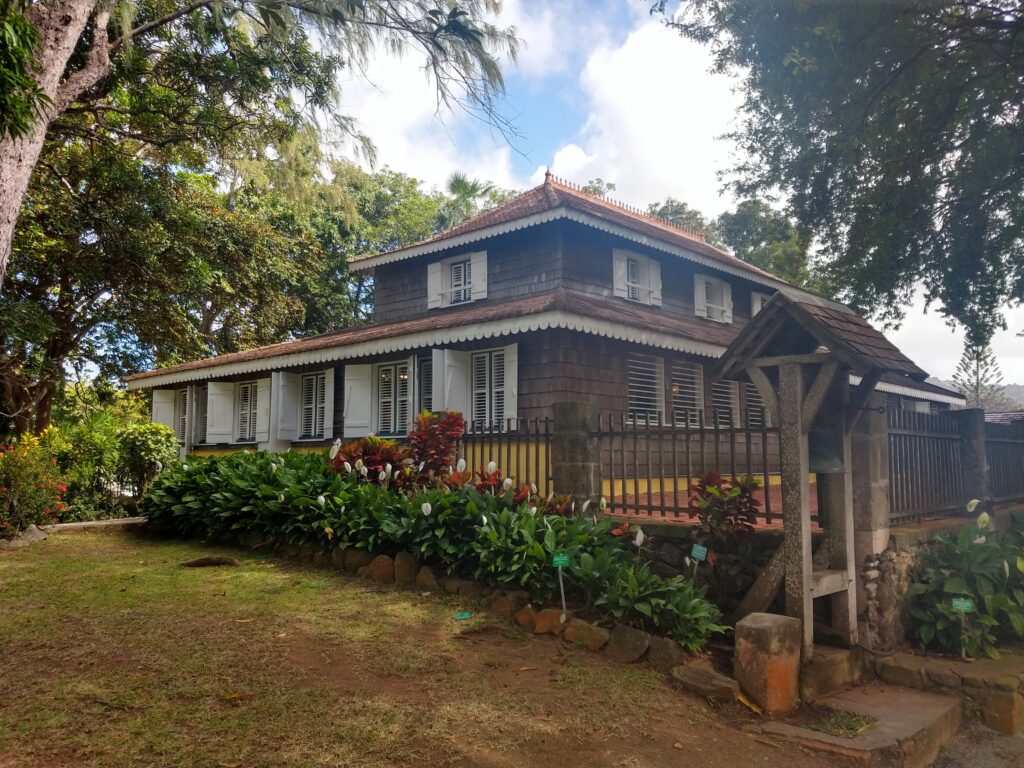


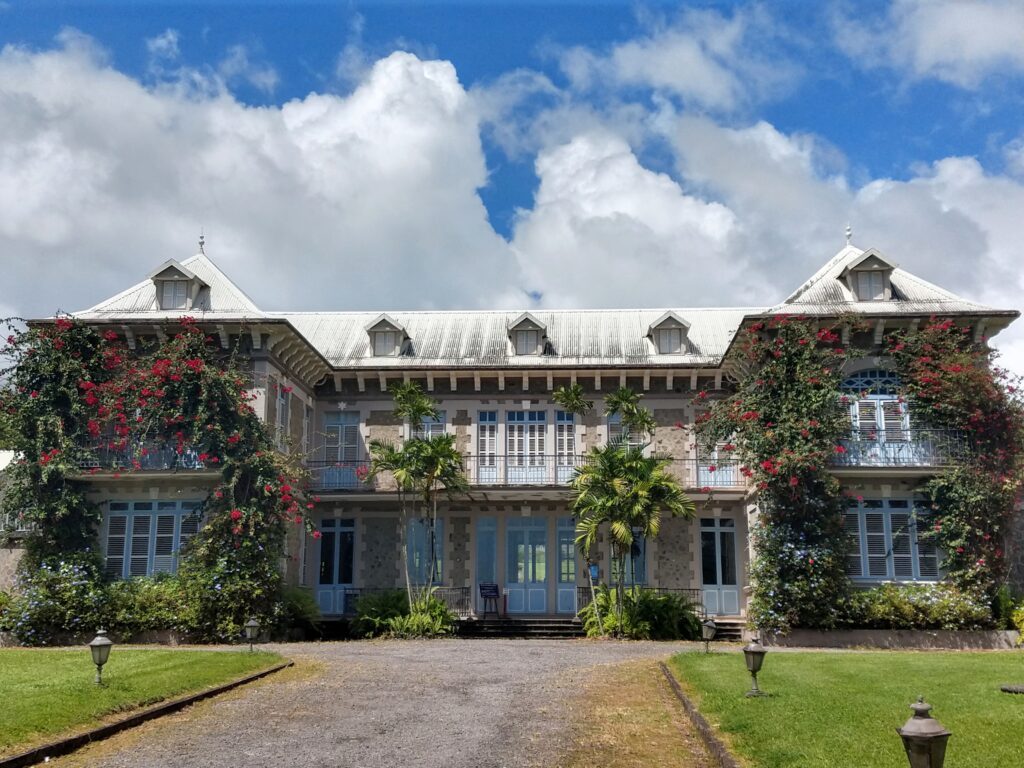

We now know a bit about the weather here: during the day some drops of rain and sometimes a small shower. In the evenings and at night it often rains a number of times. The last evening in Martinique it even rained all evening. As a result, we spent more time inside the cabin in the evenings. That is a long time ago!
Dominica – ‘Nature Island’
Friday, April 1st, we leave Martinique behind and set course for Dominica, some 35 miles north. We sail past Martinique at a calm pace, but once past the island we have a strong wind of about 20 – 25 knots. Once behind Dominica it becomes calm again.
At Roseau we are energetically received by a certain Mr. Bean who helps us with a mooring and clears us in in no time. This costs US dollar 80 via the agent we emailed; later we hear from a German couple that they arranged their own customs clearance for 9 East Caribbean dollars. Ouch!
Mr. Bean also immediately arranges a tour for the next day that takes us to the Titou Gorge and the Trafalgar Falls. At the first, the Pirates of the Caribbean comes into play again: film recordings were also made here. It is raining when the 20-year-old guide in front of us swims into the gorge close to the waterfall. He has me on a rope with a worn out swimming ring, the rope sometimes in his mouth to be able to make swimming strokes. I try to swim as close to him as possible and he always checks carefully if we are still there. The water is wonderfully refreshing. Before the Trafalgar Falls we climb and clamber barefoot for about 45 minutes over sometimes slippery rocks to swim in the pool where the water splashes down. Right next to it is a hot spring that contains iron, which makes the rocks turn red. And the water here is wonderfully warm! We float for a while from warm to cold and back before going back down.
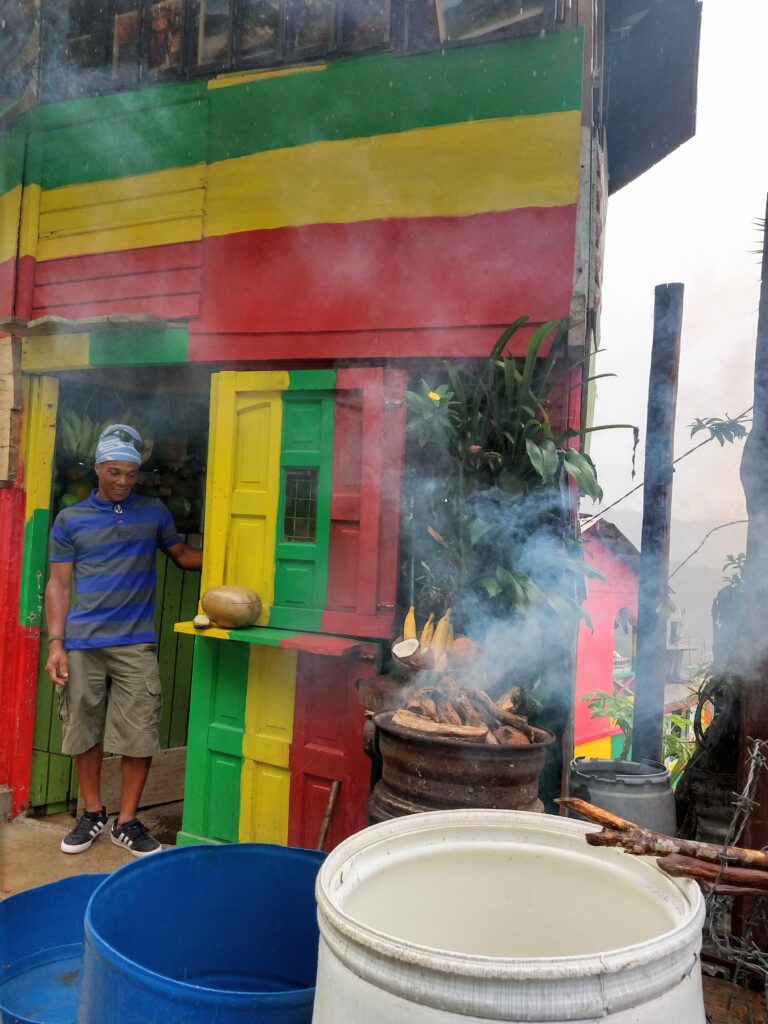
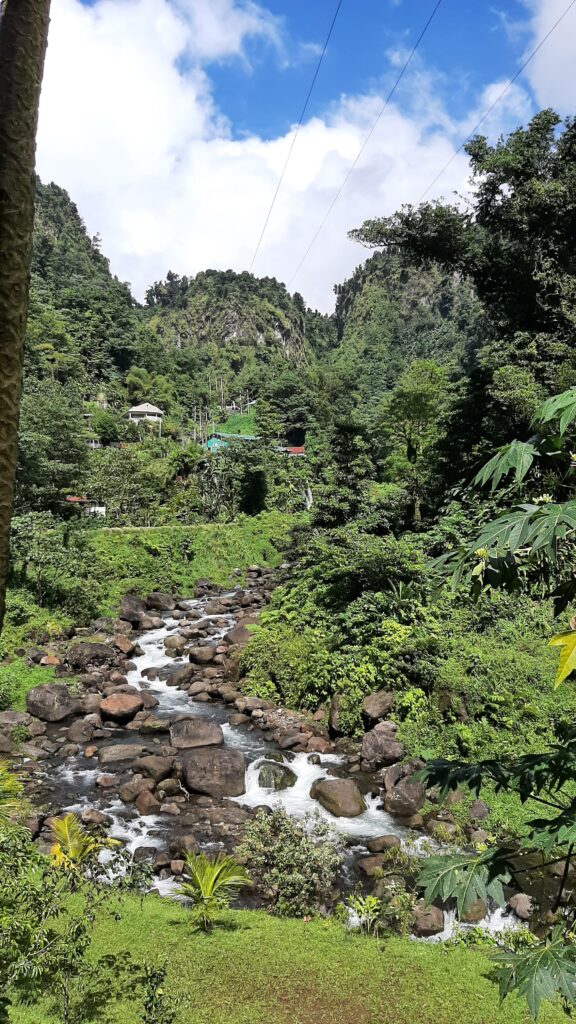

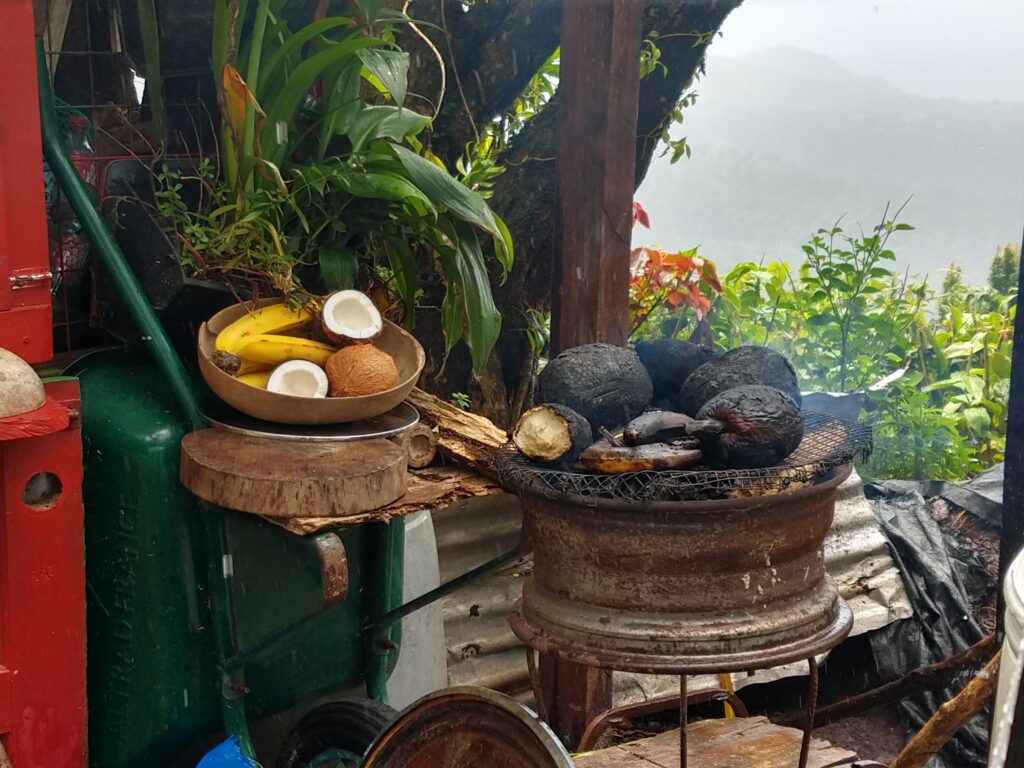
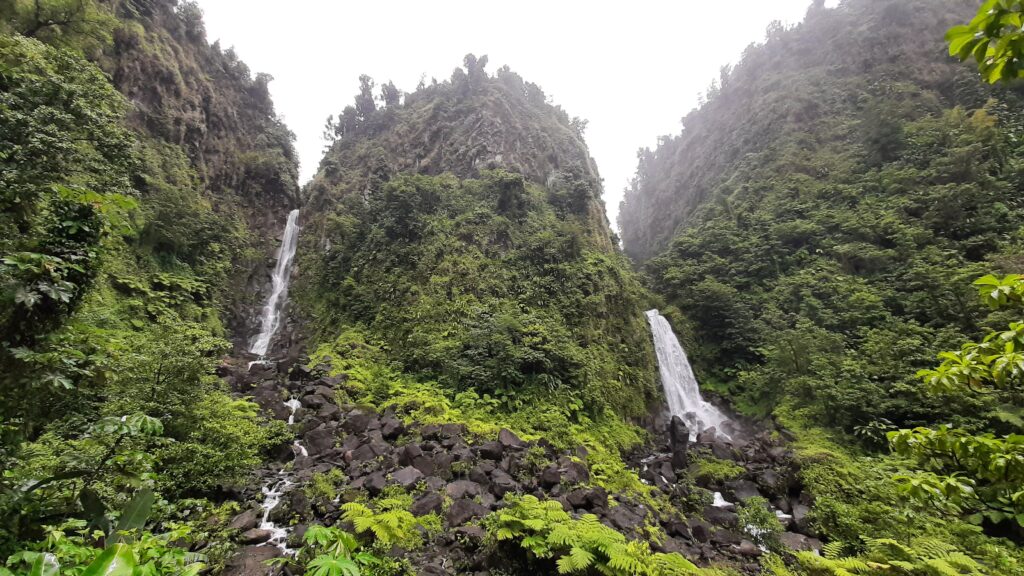
After a day of lazing about, blogging and washing we move on to the north of Dominica, to Portsmouth. We think Dominica is beautiful with its rugged, green to bright green nature where everything grows: coffee, bananas, cocoa, pineapple, mango, papaya, passion fruit, guava, citrus fruits, all kinds of nuts and herbs, many kinds of trees, tomatoes, sweet potatoes, coconuts. We learn that there are 11 kinds of bananas on Dominica and that a banana plant dies after it bears fruit. Everything is grown on a small scale on small fields.
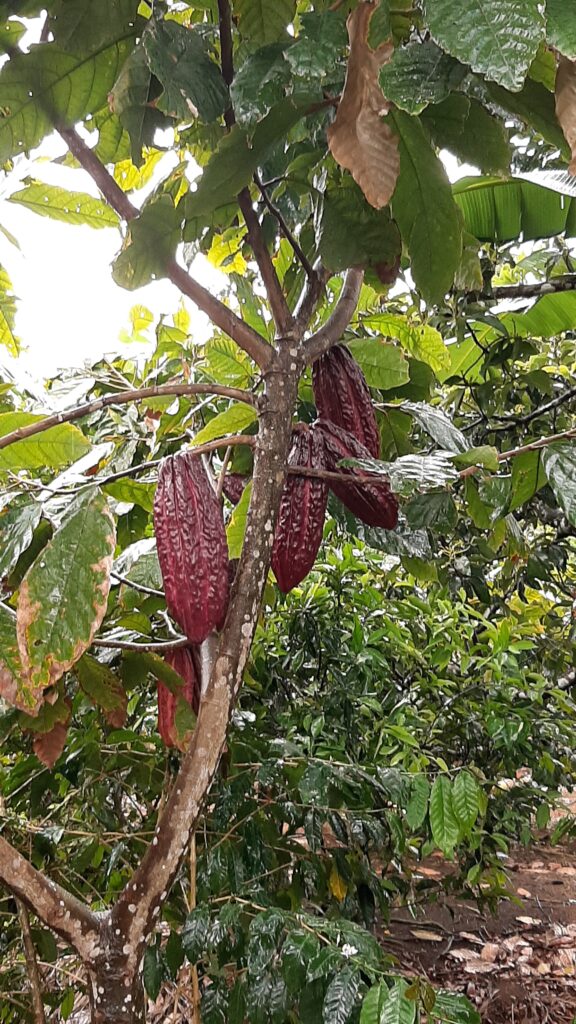
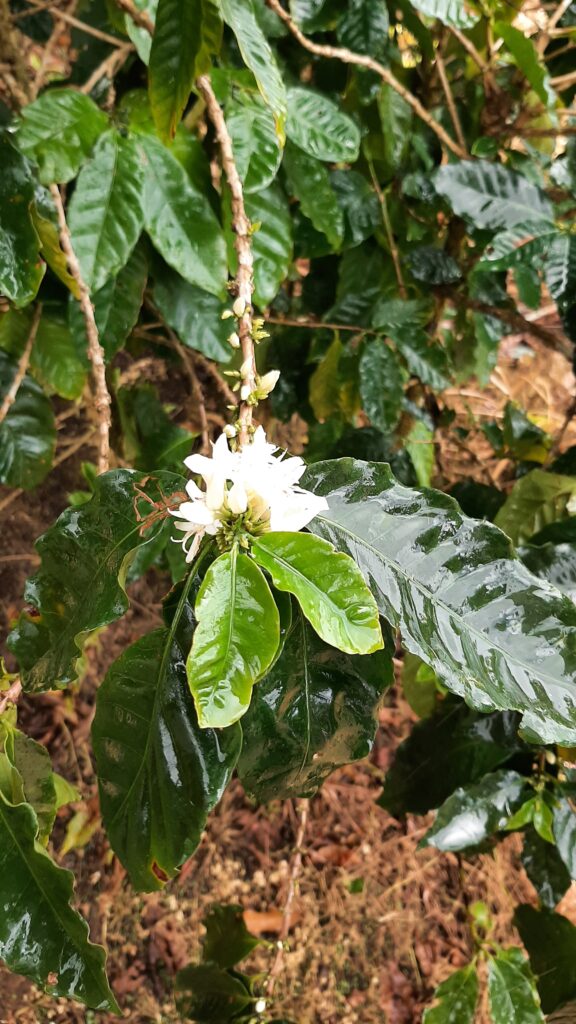


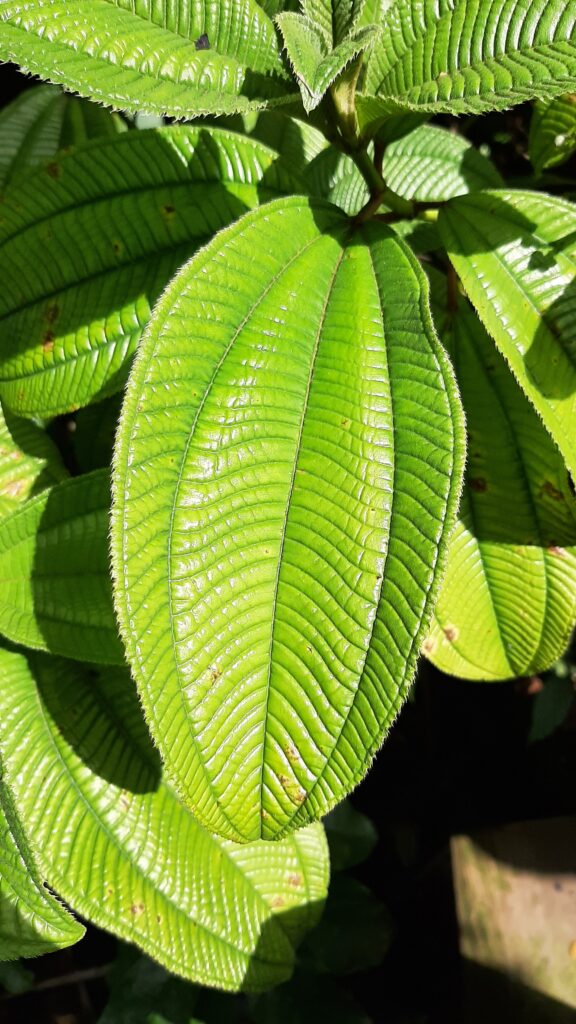
We sail up the Indian River with a guide (unfortunately we didn’t see any parrots) and we also hike with a guide along and through a river valley until we reach the point where another waterfall feeds the river. Here too we swim in the clear and fresh water.

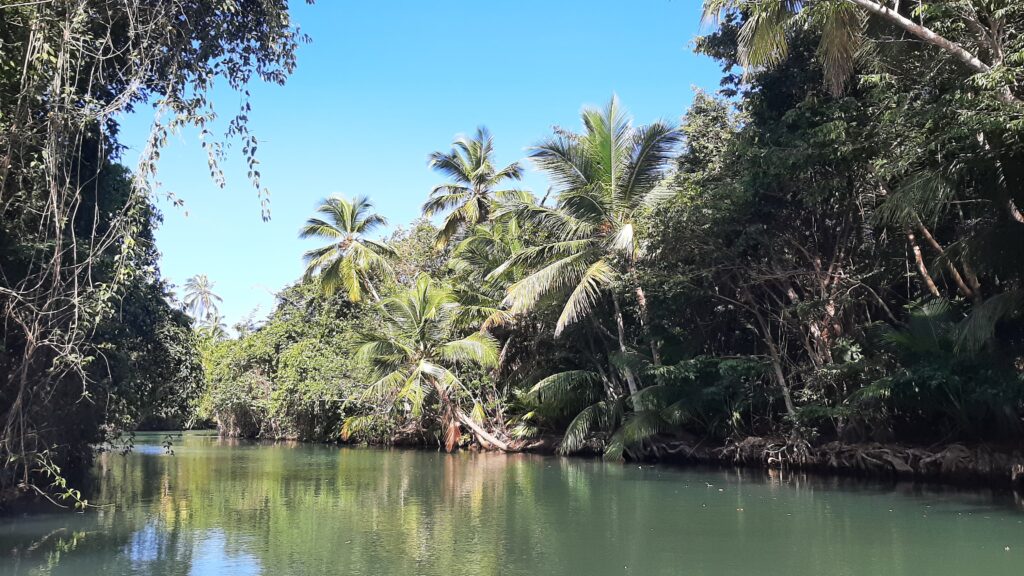
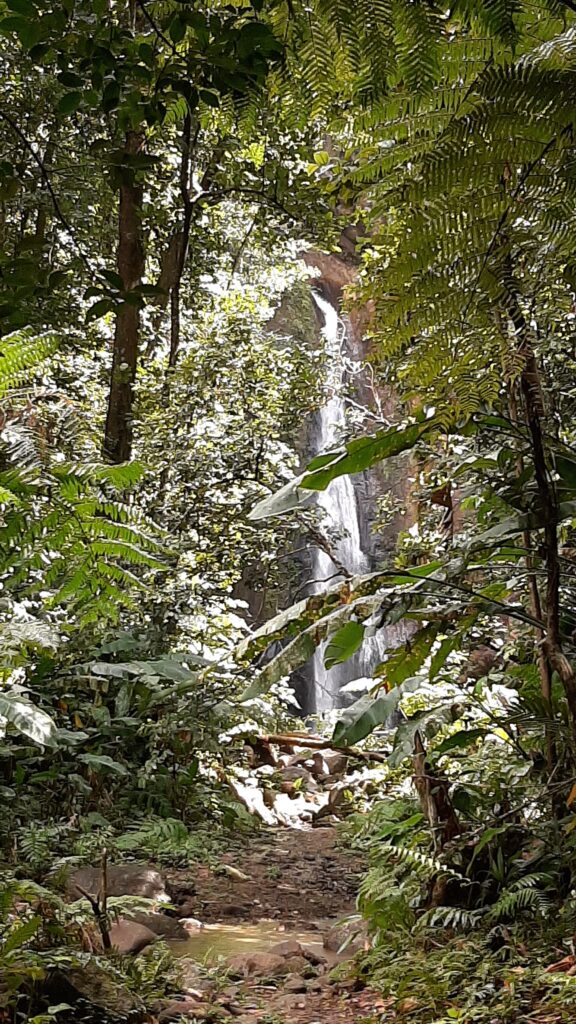
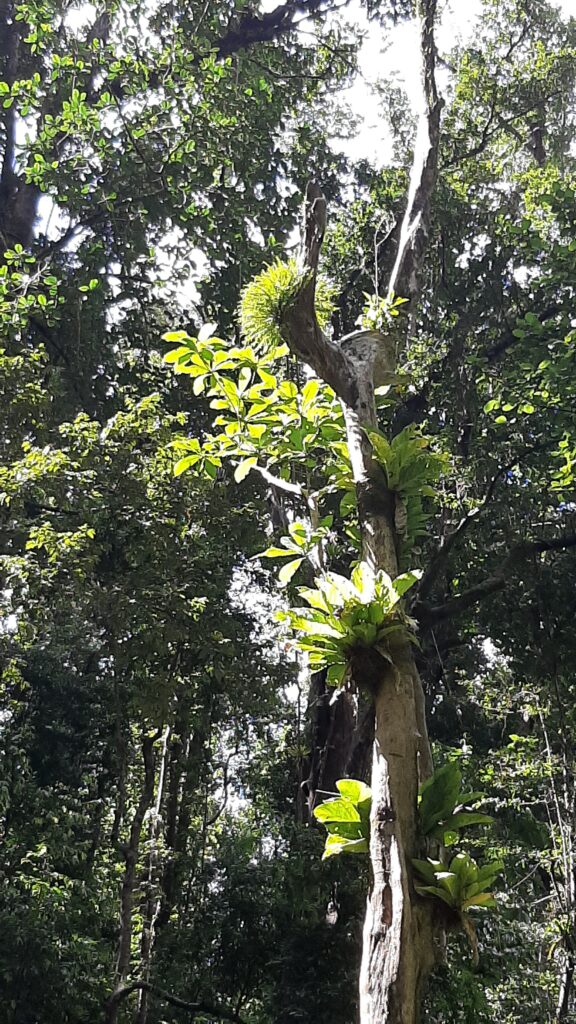

In all conversations, ‘Maria’ is always mentioned, the hurricane that raged over the country in September 2017 and caused enormous damage. Much of the infrastructure had disappeared, houses were damaged and had no electricity for months. Dominica then also lost its trading position. Much was destroyed and then the Covid came around, so Dominica has had to endure. The main road from Roseau to Portsmouth has been repaired by China and with Chinese workers. What China will ask in return for this has not become clear.
Dominica is located between Martinique and Guadeloupe; these islands are French territory. Although Dominica has also been French for a while and many Dominicans also speak French, they seem to feel more connected to Grenada, St. Vincent and the Grenadines and Antigua, the other English-oriented islands that are all part of the Commonwealth. Queen Elizabeth in her younger years also adorns the East Caribbean dollar.
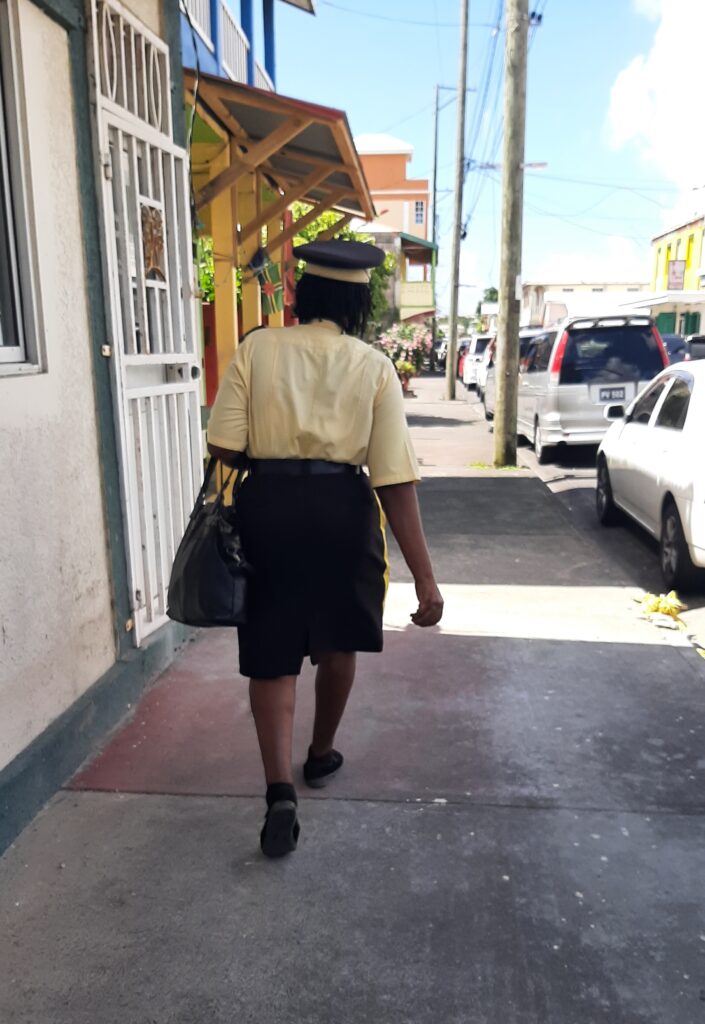

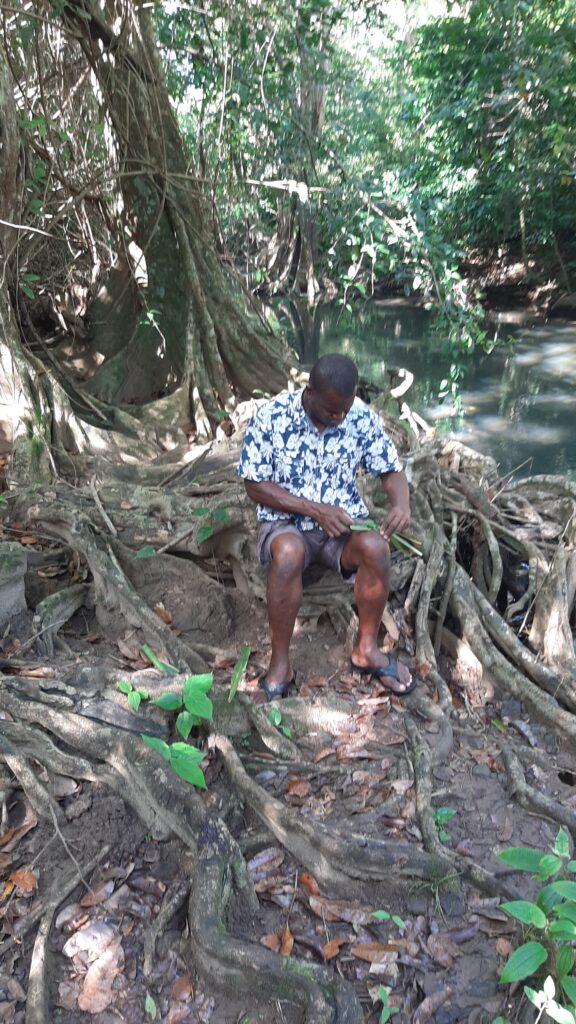
What is striking is that houses are more cared for with landscaped gardens and borders have also been laid out along the roads; bar furniture is put together, but generally looks a lot more professional than we’ve seen before. In terms of shopping, it’s a bit back to how it was in St. Vincent and the Grenadines and in Grenada, although there are also French items available here, such as crème fraîche.
The population is friendly and helpful and they talk proudly about their ‘nature island’. The country is sparsely populated, especially in comparison with Martinique and Guadeloupe (Dominica 99 inhabitants per km2, Martinique 353 and Guadeloupe 235). In Dominica 80% of the population is Catholic and 15% Protestant. It is striking that many people have bad teeth. Here again many dogs on the street and there are also many stalls where fruit and vegetables are sold. We have had quite a lot of rain on Dominica, especially in the high mountains. After a good week in Dominica we sail to the Isles de Saintes on Saturday April 9, the islands off Guadeloupe that belong to Guadeloupe and are about 20 miles from Dominica.
